Quali sono i tre tipi di refrigeratori?
Quali sono i tre tipi di refrigeratori?
Quali sono i tre tipi di refrigeratori?
Esplora i diversi tipi di refrigeratori:raffreddato ad aria, raffreddato ad acqua, E refrigeratori di assorbimento—Il keilla le loro caratteristiche uniche, applicazioni, e requisiti di manutenzione. Chiller raffreddato ad aria sono elogiati per la loro facile installazione e il basso costo, rendendoli ideali per edifici commerciali con spazio limitato. Chiller raffreddato ad acqua, noto per la loro alta efficienza, sono adatti per installazioni più grandi ma richiedono una maggiore manutenzione.
Chiller raffreddato ad aria: Caratteristiche chiave e vantaggi
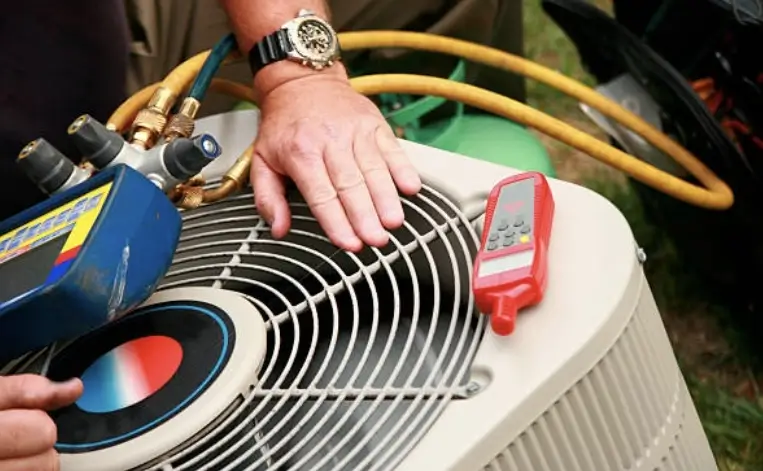
IL Chiller raffreddato ad aria offrire numerosi vantaggi distinti. Questi sistemi sono particolarmente rinomati per la loro facilità di rata e minori costi iniziali rispetto a vari altri tipi di refrigeratori. I refrigeratori raffreddati ad aria non hanno bisogno di una torre di raffreddamento separata, che semplifica la loro configurazione e la loro manutenzione. Questa funzione da sola li rende una scelta perfetta per le installazioni in cui le fonti d'acqua sono minime o in cui non è possibile infrastrutture extra.
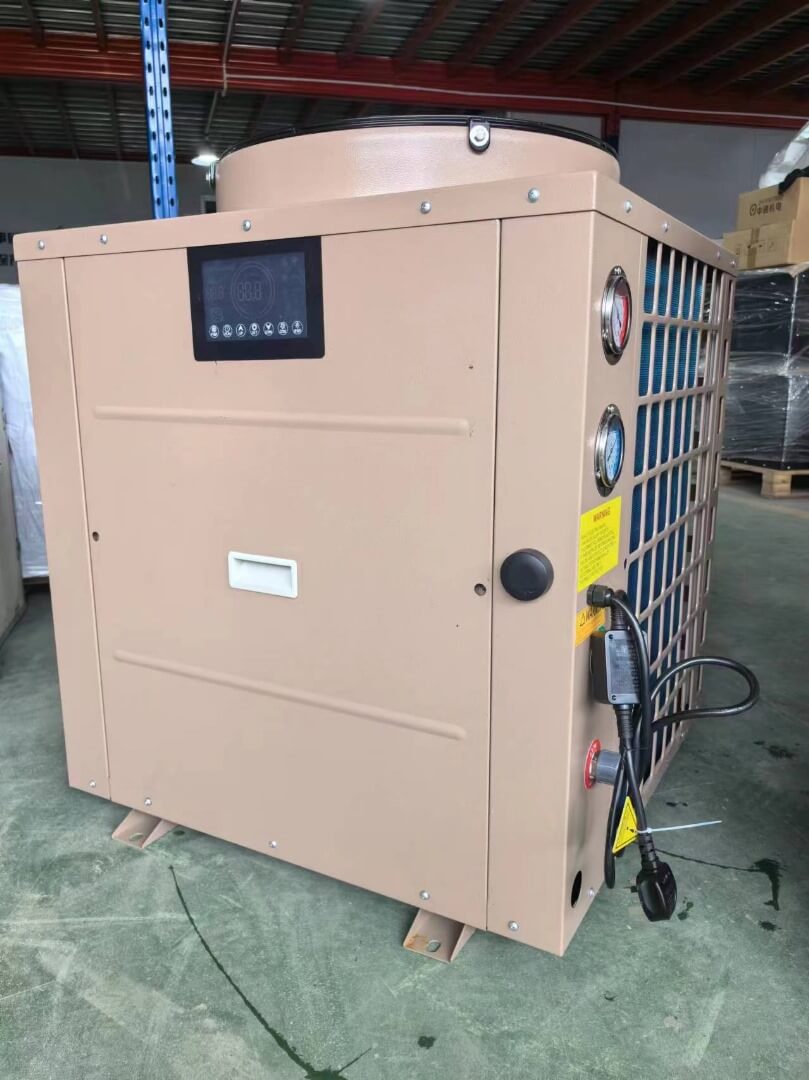
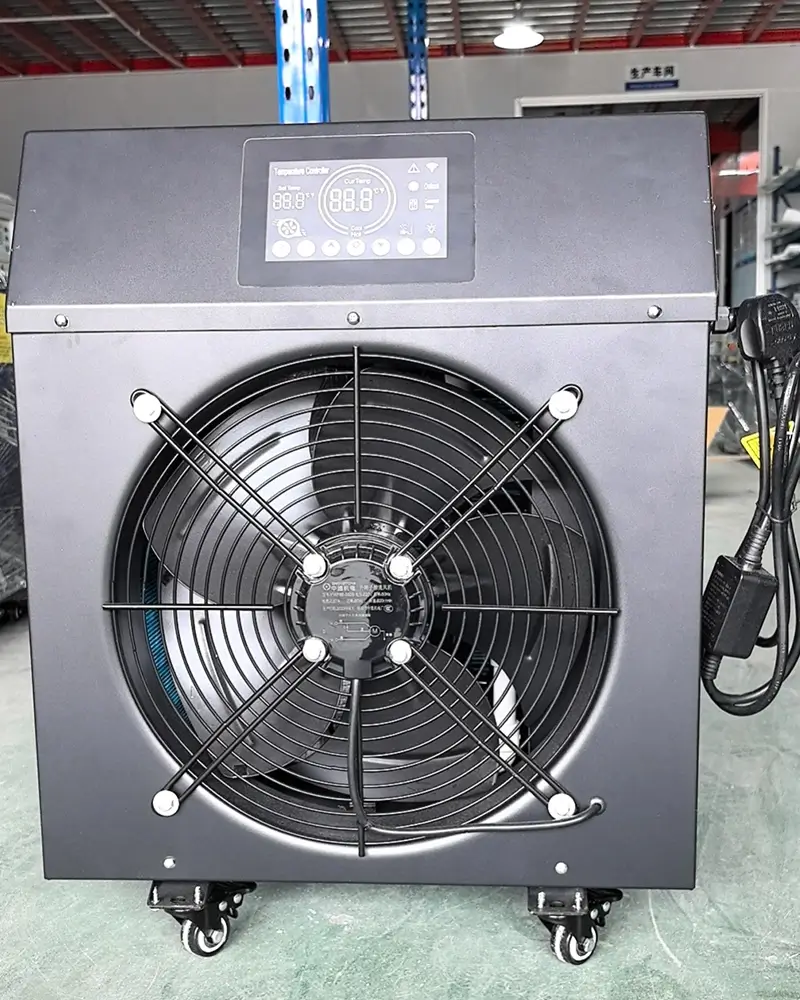
Tra i benefici vitali di Chiller raffreddato ad aria è la loro adattabilità. Possono essere montati sia all'interno della tua casa che all'aperto, Offrire un'applicazione flessibile in numerose atmosfere. In genere, I refrigeratori raffreddati ad aria vengono utilizzati negli edifici commerciali, strutture di informazione, e procedure industriali in cui l'area va a costi. Il loro layout compatto e la capacità di operare in un'ampia varietà di temperature migliorano ulteriormente il loro fascino.
Per quanto riguarda le prestazioni, Chiller raffreddato ad aria sono dotati di innovazioni di raffreddamento avanzate che garantiscono una procedura affidabile. I dispositivi moderni in genere includono unità a velocità variabile (VSD) e bobine del condensatore microcanale, che aiutano a sfruttare al meglio le prestazioni di potenza e ridurre i prezzi operativi. Inoltre, Questi refrigeratori sono progettati con parti durevoli che offrono prestazioni affidabili in periodi prolungati, Ridurre la domanda di manutenzione costante.
| Attributo | Vantaggio |
|---|---|
| Facilità di installazione | Non c'è bisogno di raffreddamento della torre, configurazione più semplice |
| Flessibilità | Può essere montato all'interno o all'aperto |
| Tecnologie di raffreddamento avanzate | Maggiori prestazioni energetiche, costi operativi ridotti |
| Componenti robusti | Prestazioni affidabili, Riduzione della manutenzione |
Su tutto, Gli attributi e i benefici essenziali dei frigoriferi raffreddati ad aria rendono una scelta altamente accattivante per numerose applicazioni. Se la gestione delle restrizioni associate alla stanza, Disponibilità dell'acqua, o budget, Questi refrigeratori offrono un'opzione flessibile ed economica per i requisiti di raffreddamento.
Chiller d'acqua per bagno di ghiaccio
- HP:1/2HP, 1HP, 1.5HP, 2HP, Massimo 50 CV
- Intervallo di temperatura da 0 ℃ a 45 ℃
- Pompa dell'acqua di riscaldamento
- Opzioni di filtraggio di livello commerciale
- Disinfettore ultravioletto
- Ruote scorrevoli
- Funzionalità di cronometraggio
- Funzione di scongelamento automatico
Chiller raffreddato ad acqua: Efficienza e applicazioni
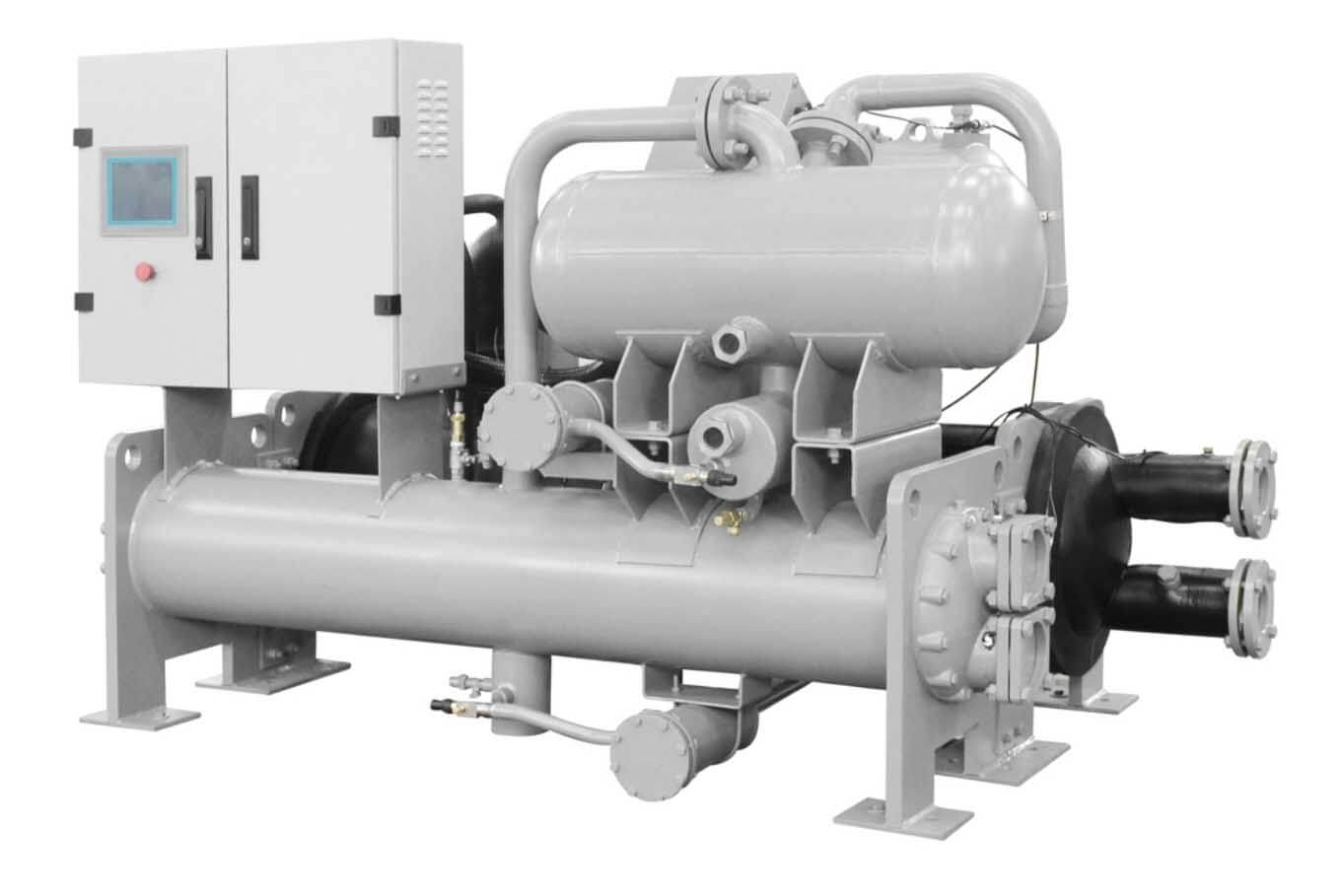
I refrigeratori raffreddati ad acqua sono noti per la loro alta efficacia e sono comunemente usati nelle più grandi configurazioni commerciali e industriali. Questi sistemi utilizzano acqua da una torre di condizionamento dell'aria esterno per dissipare il caldo, rendendoli molto più efficaci dei refrigeratori raffreddati ad aria in molti casi. Il vantaggio principale dei refrigeratori raffreddati ad acqua dipende dalla loro capacità di offrire prestazioni regolari di condizionamento dell'aria, anche in ambienti con alte temperature ambiente. Questo li rende una selezione ideale per le regioni con ambienti o centri estremi che necessitano di una costante tonnellata di raffreddamento.
Le prestazioni dei refrigeratori raffreddati ad acqua sono sostanzialmente migliorate dai livelli di temperatura di condensazione più bassi, che sono abilitati dalla capacità della torre di raffreddamento di dissipare il calore meglio dei sistemi raffreddati ad aria. Ciò porta a un uso inferiore di potenza e a una riduzione dei prezzi operativi, Rendere i refrigeratori raffreddati ad acqua un rimedio economico per un uso duraturo. Inoltre, Questi sistemi sono generalmente preferiti nelle applicazioni in cui la stanza è limitata, Poiché le torri di condizionamento dell'aria possono essere installate indipendentemente dall'unità di frigorifero.
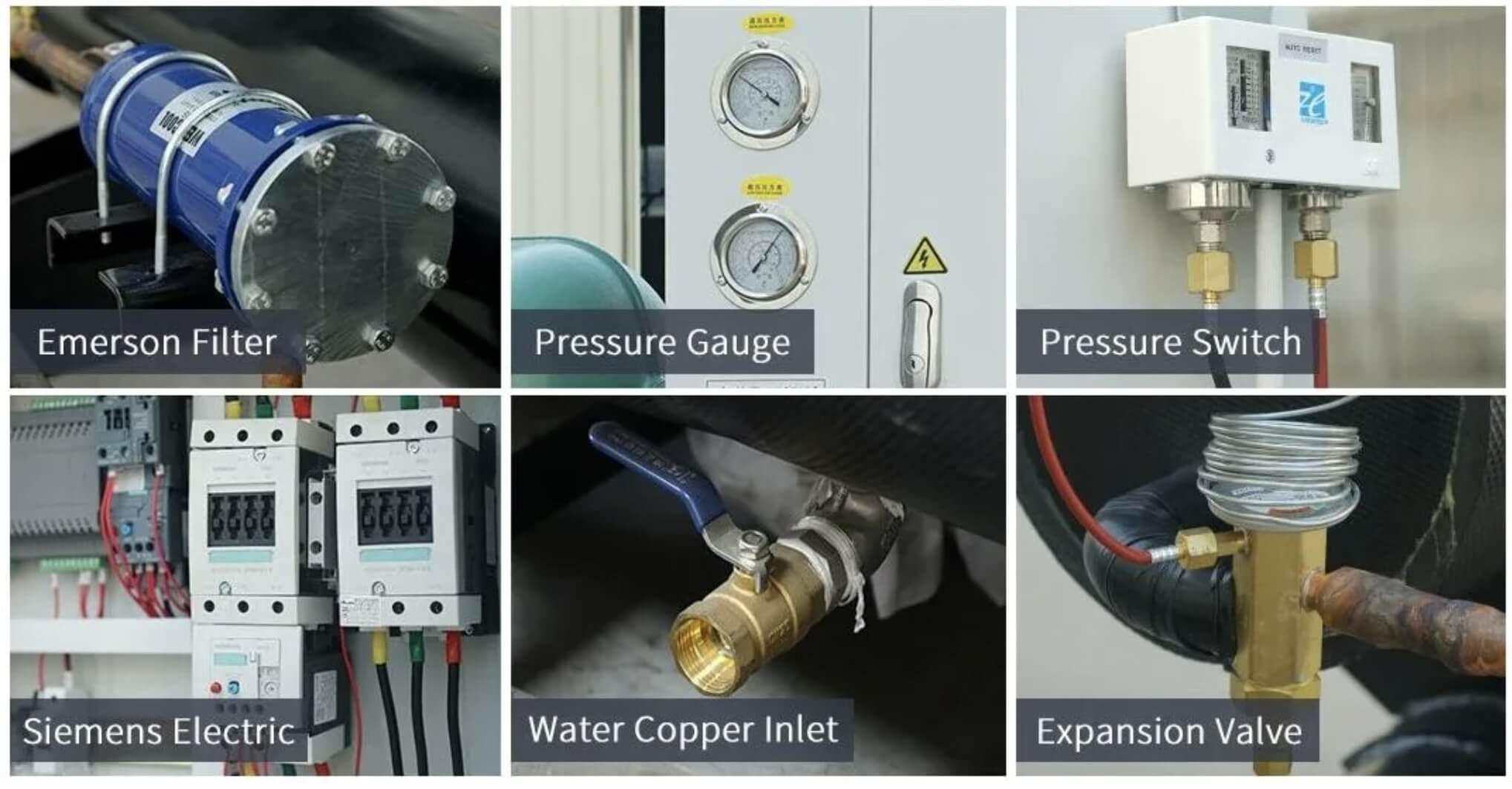
I refrigeratori raffreddati ad acqua sono appositamente appropriati per le applicazioni che richiedono aria condizionata ad alta capacità, come strutture di dati, strutture mediche, fare piante, e enormi edifici per uffici. La capacità di mantenere un'atmosfera controllata è cruciale in questi contesti, dove dispositivi e processi sono sensibili alle fluttuazioni del livello di temperatura. Inoltre, L'uso dell'acqua come mezzo di raffreddamento consente per una migliore adattabilità in stile sistema, Abilitare la modifica dei sistemi di frigorifero per soddisfare i requisiti di raffreddamento dei dettagli.
In termini di manutenzione, I refrigeratori raffreddati ad acqua richiedono generalmente più attenzione rispetto ai sistemi raffreddati ad aria. Tracciamento di routine e manutenzione della torre di condizionamento dell'aria, Terapia dell'acqua per fermare la scala e la ruggine, e l'esame dei componenti del frigorifero sono fondamentali per fare una certa efficienza e durata ottimali. Indipendentemente da queste esigenze di manutenzione, Le prestazioni di lunga durata per quanto.
Come funzionano i refrigeratori raffreddati ad acqua?
Refrigeratori di assorbimento: Come differiscono dagli altri tipi
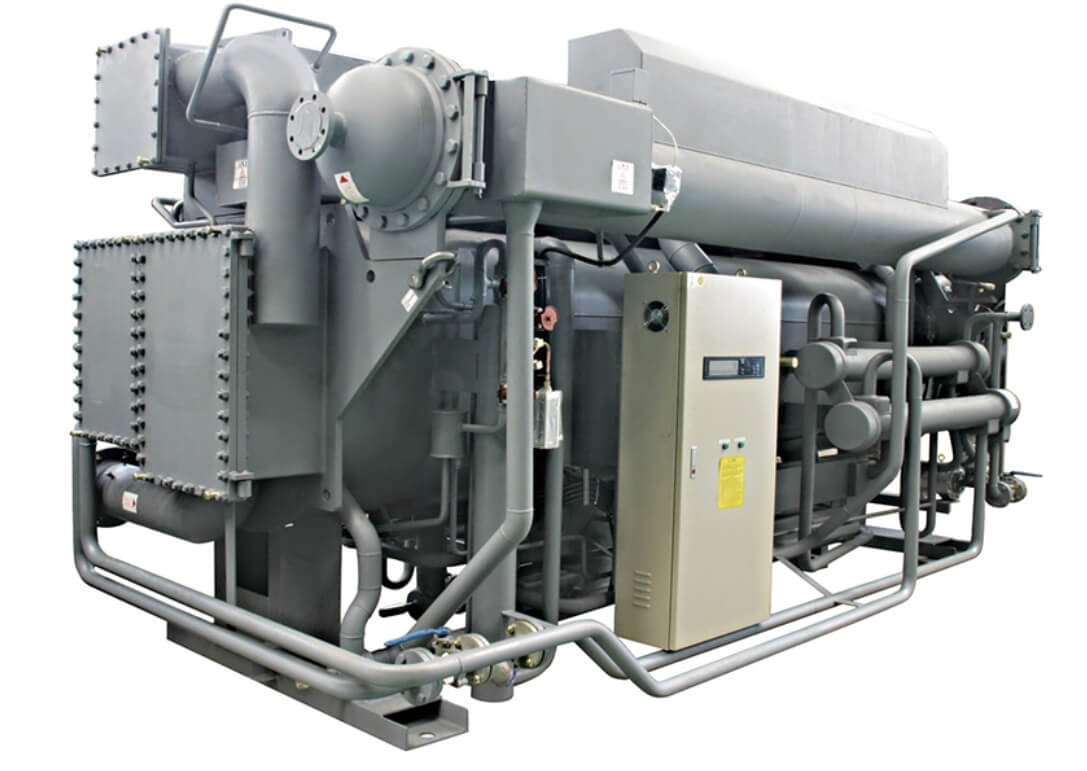
Chiller raffreddato ad acqua: Efficienza e applicazioni
I refrigeratori di assorbimento sono una sorta di frigorifero unico nel suo genere che utilizzano un sistema diverso rispetto ai refrigeratori tradizionali raffreddati ad aria e raffreddato ad acqua. Al contrario di dipendere dalla compressione meccanica per guidare il ciclo di refrigerazione, I refrigeratori di assorbimento impiegano un processo termico tra cui un refrigerante e un assorbente. Il mix più tipico utilizzato è l'acqua come agente di raffreddamento e bromuro di litio come assorbente.
Tra le distinzioni essenziali c'è la fonte di alimentazione fatta nei refrigeratori di assorbimento. Normalmente sfruttano il calore dalle risorse come il gas, vapore, o acqua calda, rendendoli un'opzione eccezionale nelle configurazioni in cui i rifiuti caldi sono prontamente disponibili o in cui i costi di energia elettrica sono alti. Questa dipendenza dall'energia termica anziché dall'energia elettrica può causare considerevoli risparmi sui costi operativi nelle giuste condizioni.
Anche i refrigeratori di assorbimento sono riconosciuti per la loro operazione silenziosa e ridotti i gradi di risonanza, poiché mancano i compressori meccanici situati in vari altri tipi di refrigerazione. Questo li rende adatti per gli ambienti in cui il suono e la risonanza devono essere ridotti al minimo.
| Attributo | Refrigeratori di assorbimento | Chiller raffreddato ad aria | Chiller raffreddato ad acqua |
|---|---|---|---|
| Fonte di energia | Termico (gas, vapore, Acqua calda) | Elettrico | Elettrico |
| Suono e vibrazione | Ridotto | Medio | Medio |
| Complessità di manutenzione | Moderare | Basso | Alto |
Tuttavia, I refrigeratori di assorbimento presentano limitazioni particolari. Di solito hanno un Coefficiente di prestazione ridotto (POLIZIOTTO) in contrasto con le loro controparti guidate elettricamente, Il che suggerisce che sono molto meno efficienti per quanto riguarda la quantità di raffreddamento offerto per sistema di energia mangiato. Inoltre, Hanno bisogno di una routine di manutenzione molto più complicata a causa del requisito per gestire la miscela assorbente e refrigerante, e per fermare la formazione e il deterioramento all'interno del sistema.
Indipendentemente da questi ostacoli, I frigoriferi di assorbimento sono estremamente apprezzati in applicazioni in cui vi è una abbondante rifornimento di calore di scarto o in cui l'uso elettrico deve essere ridotto. Sono spesso utilizzati nelle configurazioni commerciali, grandi edifici commerciali, e aree con piante di cogenerazione, Laddove la loro capacità di utilizzare il calore dei rifiuti può essere sfruttata appieno per migliori prestazioni totali.
Confronto di refrigeratori raffreddati ad aria e raffreddato ad acqua
Quando si valutano i tre tipi di refrigeratori, è necessario riconoscere le distinzioni tra refrigeratori raffreddati ad aria e raffreddamento ad acqua. Entrambi hanno i loro distinti vantaggi e appropriati per varie applicazioni basate su vari elementi, comprese le condizioni ambientali, sala di installazione, ed esigenze di efficacia.
Requisiti di configurazione e spazio
Una delle differenze principali tra i refrigeratori raffreddati ad aria e raffreddato ad acqua sono le loro esigenze di configurazione e area. I refrigeratori raffreddati ad aria sono comunemente allestiti all'aperto a causa della loro domanda di movimenti aerei sufficienti per dissipare il caldo. Questo li rende ideali per strutture con camera interna limitata. In confronto, I refrigeratori raffreddati ad acqua sono spesso installati al chiuso e richiedono una torre di raffreddamento separata, che può migliorare l'impronta totale del sistema.
Prestazioni e prestazioni
Per quanto riguarda le prestazioni, I refrigeratori raffreddati ad acqua di solito mettono in scena i disegni raffreddati ad aria. Il processo di scambio di calore nei refrigeratori raffreddati ad acqua è molto più affidabile perché l'acqua può assorbire e spostare il calore meglio dell'aria. Ciò si traduce in una ridotta spesa operativa e una maggiore efficienza, in particolare in grandi applicazioni o ambienti con richieste di aria condizionata costanti. Ciò nonostante, Le maggiori prestazioni dei refrigeratori raffreddati ad acqua sono le esigenze di manutenzione aumentate a causa della complessità del sistema, compresa la torre di raffreddamento, Pompe d'acqua del condensatore, e tubazioni aggiunte.
Considerazioni di manutenzione
La manutenzione è un altro aspetto importante in cui questi 2 I tipi di refrigeratori variano. I refrigeratori raffreddati ad aria sono normalmente meno complicati da mantenere in quanto hanno meno componenti e non richiedono una torre di raffreddamento. Questa semplicità può tradursi in prezzi di manutenzione più bassi e molto meno tempi di inattività. D'altra parte, I refrigeratori raffreddati ad acqua richiedono manutenzione di routine della torre di condizionamento dell'aria, Trattamento delle acque per fermare il ridimensionamento e la corrosione, e pulizia regolare dei tubi del condensatore per mantenere le prestazioni.
Impatto ambientale
Allo stesso modo i problemi ambientali svolgono una funzione considerevole nell'identificazione dell'idoneità di ciascun tipo di refrigeratore. I refrigeratori raffreddati ad aria sono meno colpiti dalle temperature ambientali e possono essere utilizzati in una varietà di climi. Tuttavia, tendono ad essere più rumorosi a causa dei seguaci richiesti per il flusso d'aria. Chiller raffreddato ad acqua, Mentre silenzioso, Contare su un approvvigionamento idrico costante e sono extra a rischio per le linee guida ecologiche relative all'uso e allo scarico dell'acqua. Perciò, La selezione tra refrigeratori raffreddati ad aria e raffreddato ad acqua dipende comunemente da alcuni problemi ecologici e dalle esigenze regolatorie del sito di rata.
Implicazioni sui prezzi
I costi iniziali e le spese operative di questi refrigeratori differiscono inoltre in modo considerevole. I refrigeratori raffreddati ad aria hanno in genere un prezzo preliminare ridotto a causa del fatto che non richiedono una torre di raffreddamento o sistemi di tubazioni complesse. Tuttavia, La loro spesa operativa può essere maggiore a causa del trasferimento caldo molto meno efficace. D'altra parte, Chiller raffreddato ad acqua, sebbene molto più costoso da installare, Mancano comunemente le spese operative inferiori nel tempo a causa della loro eccezionale efficienza. Questa differenza di spesa deve essere esaminata con molta attenzione nel contesto della particolare applicazione e di un utilizzo di lunga durata.
Applicazioni più adatte ai refrigeratori di assorbimento
I refrigeratori di assorbimento si distinguono da vari altri tipi di frigoriferi principalmente a causa del loro unico sistema di procedura, che sfrutta una fonte di calore piuttosto che un'energia elettrica per la refrigerazione. This characteristic makes them especially ideal for details applications where waste heat or eco-friendly power resources are readily available.
Industrial Processes
Absorption chillers are extensively made use of in industrial settings where waste warmth is a by-product of manufacturing procedures. Per esempio, in chemical plants, refineries, and power generation facilities, these chillers effectively make use of the excess warm to offer air conditioning, thereby boosting total power performance and decreasing operational expenses.
Commercial Buildings
In large commercial structures, such as resorts, healthcare facilities, and workplace complexes, absorption refrigerators are ideal for combined warmth and power (CHP) systems. These systems produce both electrical power and valuable warmth, which the chillers can then make use of to provide cooling. Questo doppio utilizzo delle fonti energetiche migliora notevolmente la sostenibilità e l'efficacia in termini di costi del sistema HVAC della struttura.
Sistemi di raffreddamento dell'area
I refrigeratori di assorbimento sono una parte fondamentale nei sistemi di raffreddamento distrettuale, che disperdono l'acqua raffreddata in numerose strutture all'interno di un'area. Tali sistemi integrano spesso impianti di cogenerazione che creano energia elettrica e catturano il calore dei rifiuti per gli obiettivi di raffreddamento. La combinazione di refrigeratori di assorbimento in questi sistemi garantisce una fornitura di raffreddamento stabile e affidabile, Ridurre l'effetto ecologico.
Integrazione delle energie rinnovabili
I refrigeratori di assorbimento possono inoltre essere alimentati da risorse energetiche sostenibili, come l'energia termica solare. In regioni con luce solare abbondante, Le batterie solari possono fornire il calore necessario per guidare il frigorifero, Utilizzando un rimedio di raffreddamento ecologico. Questa applicazione è particolarmente preziosa per abbassare la dipendenza dai combustibili fossili e una riduzione degli scarichi di gas serra.
Ha fornito la loro dipendenza dalle fonti di calore, I refrigeratori di assorbimento sono particolarmente utili negli scenari in cui il calore dei rifiuti o l'energia sostenibile sono abbondanti e in cui minimizzare il carico elettrico è una preoccupazione. Queste applicazioni sottolineano l'adattabilità e la sostenibilità dei refrigeratori di assorbimento nei sistemi energetici contemporanei.
Suggerimenti per la manutenzione per diversi tipi di refrigeratori
È necessaria una manutenzione adeguata dei refrigeratori per garantire le loro prestazioni a lungo termine, integrità, e prestazioni. IL 3 Tipi primari di refrigeratori-- raffreddato ad aria, raffreddato ad acqua, e refrigeratori di assorbimento- Ognuno ha le richieste di manutenzione dei dettagli che devono essere seguite. Elencato di seguito, Fornisco suggerimenti di manutenzione dettagliati su misura per una sorta di refrigeratore, highlighting the one-of-a-kind elements that ought to be considered to maintain these systems running ideally.
Chiller raffreddato ad aria
Air-cooled chillers rely on ambient air to dissipate heat, that makes their upkeep somewhat more uncomplicated but still essential. Trick upkeep tasks consist of:
| Task | Frequency |
|---|---|
| Tidy condenser coils to avoid dust and particles accumulation | Month-to-month |
| Check and oil fan motors | Bi-annually |
| Inspect refrigerant degrees and change as needed | Every year |
| Inspect electrical links for wear or corrosion | Yearly |
Chiller raffreddato ad acqua
Water-cooled chillers are more effective but call for even more rigorous maintenance due to their complexity. Important upkeep practices consist of:
| Task | Frequency |
|---|---|
| Examine and tidy cooling towers to avoid scaling and organic development | Quarterly |
| Display water top quality and deal with for scale, deterioration, e crescita biologica | Continually |
| Examination and adjust pressure assesses and sensors | Yearly |
| Inspect and change pump seals and bearings | Each year |
Refrigeratori di assorbimento
Absorption chillers are unique in their operation, typically utilizing heat sources instead of electrical energy to drive the cooling procedure. Their maintenance involves:
| Task | Frequency |
|---|---|
| Screen and keep the solution concentration | Every year |
| Check and tidy heat exchangers | Annually |
| Look for any type of gas leaks in the system | Bi-annually |
| Routinely evaluate pumps and shutoffs for wear | Annually |
By following these upkeep pointers, facility managers can make certain that their chillers-- whether air-cooled, raffreddato ad acqua, or absorption-- operate effectively and with marginal downtime. Regular maintenance not just extends the life-span of the devices however additionally improves the general power performance of the system, causing set you back savings over time.
Prima della partita
Quali sono i tre tipi di refrigeratori?
Quali sono i tre tipi di refrigeratori?
Esplora i diversi tipi di refrigeratori:raffreddato ad aria, raffreddato ad acqua, E refrigeratori di assorbimento—Il keilla le loro caratteristiche uniche, applicazioni, e requisiti di manutenzione. Chiller raffreddato ad aria sono elogiati per la loro facile installazione e il basso costo, rendendoli ideali per edifici commerciali con spazio limitato. Chiller raffreddato ad acqua, noto per la loro alta efficienza, sono adatti per installazioni più grandi ma richiedono una maggiore manutenzione.
Chiller raffreddato ad aria: Caratteristiche chiave e vantaggi

IL Chiller raffreddato ad aria offrire numerosi vantaggi distinti. Questi sistemi sono particolarmente rinomati per la loro facilità di rata e minori costi iniziali rispetto a vari altri tipi di refrigeratori. I refrigeratori raffreddati ad aria non hanno bisogno di una torre di raffreddamento separata, che semplifica la loro configurazione e la loro manutenzione. Questa funzione da sola li rende una scelta perfetta per le installazioni in cui le fonti d'acqua sono minime o in cui non è possibile infrastrutture extra.


Tra i benefici vitali di Chiller raffreddato ad aria è la loro adattabilità. Possono essere montati sia all'interno della tua casa che all'aperto, Offrire un'applicazione flessibile in numerose atmosfere. In genere, I refrigeratori raffreddati ad aria vengono utilizzati negli edifici commerciali, strutture di informazione, e procedure industriali in cui l'area va a costi. Il loro layout compatto e la capacità di operare in un'ampia varietà di temperature migliorano ulteriormente il loro fascino.
Per quanto riguarda le prestazioni, Chiller raffreddato ad aria sono dotati di innovazioni di raffreddamento avanzate che garantiscono una procedura affidabile. I dispositivi moderni in genere includono unità a velocità variabile (VSD) e bobine del condensatore microcanale, che aiutano a sfruttare al meglio le prestazioni di potenza e ridurre i prezzi operativi. Inoltre, Questi refrigeratori sono progettati con parti durevoli che offrono prestazioni affidabili in periodi prolungati, Ridurre la domanda di manutenzione costante.
| Attributo | Vantaggio |
|---|---|
| Facilità di installazione | Non c'è bisogno di raffreddamento della torre, configurazione più semplice |
| Flessibilità | Può essere montato all'interno o all'aperto |
| Tecnologie di raffreddamento avanzate | Maggiori prestazioni energetiche, costi operativi ridotti |
| Componenti robusti | Prestazioni affidabili, Riduzione della manutenzione |
Su tutto, Gli attributi e i benefici essenziali dei frigoriferi raffreddati ad aria rendono una scelta altamente accattivante per numerose applicazioni. Se la gestione delle restrizioni associate alla stanza, Disponibilità dell'acqua, o budget, Questi refrigeratori offrono un'opzione flessibile ed economica per i requisiti di raffreddamento.
Chiller d'acqua per bagno di ghiaccio
- HP:1/2HP, 1HP, 1.5HP, 2HP, Massimo 50 CV
- Intervallo di temperatura da 0 ℃ a 45 ℃
- Pompa dell'acqua di riscaldamento
- Opzioni di filtraggio di livello commerciale
- Disinfettore ultravioletto
- Ruote scorrevoli
- Funzionalità di cronometraggio
- Funzione di scongelamento automatico
Chiller raffreddato ad acqua: Efficienza e applicazioni

I refrigeratori raffreddati ad acqua sono noti per la loro alta efficacia e sono comunemente usati nelle più grandi configurazioni commerciali e industriali. Questi sistemi utilizzano acqua da una torre di condizionamento dell'aria esterno per dissipare il caldo, rendendoli molto più efficaci dei refrigeratori raffreddati ad aria in molti casi. Il vantaggio principale dei refrigeratori raffreddati ad acqua dipende dalla loro capacità di offrire prestazioni regolari di condizionamento dell'aria, anche in ambienti con alte temperature ambiente. Questo li rende una selezione ideale per le regioni con ambienti o centri estremi che necessitano di una costante tonnellata di raffreddamento.
Le prestazioni dei refrigeratori raffreddati ad acqua sono sostanzialmente migliorate dai livelli di temperatura di condensazione più bassi, che sono abilitati dalla capacità della torre di raffreddamento di dissipare il calore meglio dei sistemi raffreddati ad aria. Ciò porta a un uso inferiore di potenza e a una riduzione dei prezzi operativi, Rendere i refrigeratori raffreddati ad acqua un rimedio economico per un uso duraturo. Inoltre, Questi sistemi sono generalmente preferiti nelle applicazioni in cui la stanza è limitata, Poiché le torri di condizionamento dell'aria possono essere installate indipendentemente dall'unità di frigorifero.

I refrigeratori raffreddati ad acqua sono appositamente appropriati per le applicazioni che richiedono aria condizionata ad alta capacità, come strutture di dati, strutture mediche, fare piante, e enormi edifici per uffici. La capacità di mantenere un'atmosfera controllata è cruciale in questi contesti, dove dispositivi e processi sono sensibili alle fluttuazioni del livello di temperatura. Inoltre, L'uso dell'acqua come mezzo di raffreddamento consente per una migliore adattabilità in stile sistema, Abilitare la modifica dei sistemi di frigorifero per soddisfare i requisiti di raffreddamento dei dettagli.
In termini di manutenzione, I refrigeratori raffreddati ad acqua richiedono generalmente più attenzione rispetto ai sistemi raffreddati ad aria. Tracciamento di routine e manutenzione della torre di condizionamento dell'aria, Terapia dell'acqua per fermare la scala e la ruggine, e l'esame dei componenti del frigorifero sono fondamentali per fare una certa efficienza e durata ottimali. Indipendentemente da queste esigenze di manutenzione, Le prestazioni di lunga durata per quanto.
Come funzionano i refrigeratori raffreddati ad acqua?
Refrigeratori di assorbimento: Come differiscono dagli altri tipi

Chiller raffreddato ad acqua: Efficienza e applicazioni
I refrigeratori di assorbimento sono una sorta di frigorifero unico nel suo genere che utilizzano un sistema diverso rispetto ai refrigeratori tradizionali raffreddati ad aria e raffreddato ad acqua. Al contrario di dipendere dalla compressione meccanica per guidare il ciclo di refrigerazione, I refrigeratori di assorbimento impiegano un processo termico tra cui un refrigerante e un assorbente. Il mix più tipico utilizzato è l'acqua come agente di raffreddamento e bromuro di litio come assorbente.
Tra le distinzioni essenziali c'è la fonte di alimentazione fatta nei refrigeratori di assorbimento. Normalmente sfruttano il calore dalle risorse come il gas, vapore, o acqua calda, rendendoli un'opzione eccezionale nelle configurazioni in cui i rifiuti caldi sono prontamente disponibili o in cui i costi di energia elettrica sono alti. Questa dipendenza dall'energia termica anziché dall'energia elettrica può causare considerevoli risparmi sui costi operativi nelle giuste condizioni.
Anche i refrigeratori di assorbimento sono riconosciuti per la loro operazione silenziosa e ridotti i gradi di risonanza, poiché mancano i compressori meccanici situati in vari altri tipi di refrigerazione. Questo li rende adatti per gli ambienti in cui il suono e la risonanza devono essere ridotti al minimo.
| Attributo | Refrigeratori di assorbimento | Chiller raffreddato ad aria | Chiller raffreddato ad acqua |
|---|---|---|---|
| Fonte di energia | Termico (gas, vapore, Acqua calda) | Elettrico | Elettrico |
| Suono e vibrazione | Ridotto | Medio | Medio |
| Complessità di manutenzione | Moderare | Basso | Alto |
Tuttavia, I refrigeratori di assorbimento presentano limitazioni particolari. Di solito hanno un Coefficiente di prestazione ridotto (POLIZIOTTO) in contrasto con le loro controparti guidate elettricamente, Il che suggerisce che sono molto meno efficienti per quanto riguarda la quantità di raffreddamento offerto per sistema di energia mangiato. Inoltre, Hanno bisogno di una routine di manutenzione molto più complicata a causa del requisito per gestire la miscela assorbente e refrigerante, e per fermare la formazione e il deterioramento all'interno del sistema.
Indipendentemente da questi ostacoli, I frigoriferi di assorbimento sono estremamente apprezzati in applicazioni in cui vi è una abbondante rifornimento di calore di scarto o in cui l'uso elettrico deve essere ridotto. Sono spesso utilizzati nelle configurazioni commerciali, grandi edifici commerciali, e aree con piante di cogenerazione, Laddove la loro capacità di utilizzare il calore dei rifiuti può essere sfruttata appieno per migliori prestazioni totali.
Confronto di refrigeratori raffreddati ad aria e raffreddato ad acqua
Quando si valutano i tre tipi di refrigeratori, è necessario riconoscere le distinzioni tra refrigeratori raffreddati ad aria e raffreddamento ad acqua. Entrambi hanno i loro distinti vantaggi e appropriati per varie applicazioni basate su vari elementi, comprese le condizioni ambientali, sala di installazione, ed esigenze di efficacia.
Requisiti di configurazione e spazio
Una delle differenze principali tra i refrigeratori raffreddati ad aria e raffreddato ad acqua sono le loro esigenze di configurazione e area. I refrigeratori raffreddati ad aria sono comunemente allestiti all'aperto a causa della loro domanda di movimenti aerei sufficienti per dissipare il caldo. Questo li rende ideali per strutture con camera interna limitata. In confronto, I refrigeratori raffreddati ad acqua sono spesso installati al chiuso e richiedono una torre di raffreddamento separata, che può migliorare l'impronta totale del sistema.
Prestazioni e prestazioni
Per quanto riguarda le prestazioni, I refrigeratori raffreddati ad acqua di solito mettono in scena i disegni raffreddati ad aria. Il processo di scambio di calore nei refrigeratori raffreddati ad acqua è molto più affidabile perché l'acqua può assorbire e spostare il calore meglio dell'aria. Ciò si traduce in una ridotta spesa operativa e una maggiore efficienza, in particolare in grandi applicazioni o ambienti con richieste di aria condizionata costanti. Ciò nonostante, Le maggiori prestazioni dei refrigeratori raffreddati ad acqua sono le esigenze di manutenzione aumentate a causa della complessità del sistema, compresa la torre di raffreddamento, Pompe d'acqua del condensatore, e tubazioni aggiunte.
Considerazioni di manutenzione
La manutenzione è un altro aspetto importante in cui questi 2 I tipi di refrigeratori variano. I refrigeratori raffreddati ad aria sono normalmente meno complicati da mantenere in quanto hanno meno componenti e non richiedono una torre di raffreddamento. Questa semplicità può tradursi in prezzi di manutenzione più bassi e molto meno tempi di inattività. D'altra parte, I refrigeratori raffreddati ad acqua richiedono manutenzione di routine della torre di condizionamento dell'aria, Trattamento delle acque per fermare il ridimensionamento e la corrosione, e pulizia regolare dei tubi del condensatore per mantenere le prestazioni.
Impatto ambientale
Allo stesso modo i problemi ambientali svolgono una funzione considerevole nell'identificazione dell'idoneità di ciascun tipo di refrigeratore. I refrigeratori raffreddati ad aria sono meno colpiti dalle temperature ambientali e possono essere utilizzati in una varietà di climi. Tuttavia, tendono ad essere più rumorosi a causa dei seguaci richiesti per il flusso d'aria. Chiller raffreddato ad acqua, Mentre silenzioso, Contare su un approvvigionamento idrico costante e sono extra a rischio per le linee guida ecologiche relative all'uso e allo scarico dell'acqua. Perciò, La selezione tra refrigeratori raffreddati ad aria e raffreddato ad acqua dipende comunemente da alcuni problemi ecologici e dalle esigenze regolatorie del sito di rata.
Implicazioni sui prezzi
I costi iniziali e le spese operative di questi refrigeratori differiscono inoltre in modo considerevole. I refrigeratori raffreddati ad aria hanno in genere un prezzo preliminare ridotto a causa del fatto che non richiedono una torre di raffreddamento o sistemi di tubazioni complesse. Tuttavia, La loro spesa operativa può essere maggiore a causa del trasferimento caldo molto meno efficace. D'altra parte, Chiller raffreddato ad acqua, sebbene molto più costoso da installare, Mancano comunemente le spese operative inferiori nel tempo a causa della loro eccezionale efficienza. Questa differenza di spesa deve essere esaminata con molta attenzione nel contesto della particolare applicazione e di un utilizzo di lunga durata.
Applicazioni più adatte ai refrigeratori di assorbimento
I refrigeratori di assorbimento si distinguono da vari altri tipi di frigoriferi principalmente a causa del loro unico sistema di procedura, che sfrutta una fonte di calore piuttosto che un'energia elettrica per la refrigerazione. This characteristic makes them especially ideal for details applications where waste heat or eco-friendly power resources are readily available.
Industrial Processes
Absorption chillers are extensively made use of in industrial settings where waste warmth is a by-product of manufacturing procedures. Per esempio, in chemical plants, refineries, and power generation facilities, these chillers effectively make use of the excess warm to offer air conditioning, thereby boosting total power performance and decreasing operational expenses.
Commercial Buildings
In large commercial structures, such as resorts, healthcare facilities, and workplace complexes, absorption refrigerators are ideal for combined warmth and power (CHP) systems. These systems produce both electrical power and valuable warmth, which the chillers can then make use of to provide cooling. Questo doppio utilizzo delle fonti energetiche migliora notevolmente la sostenibilità e l'efficacia in termini di costi del sistema HVAC della struttura.
Sistemi di raffreddamento dell'area
I refrigeratori di assorbimento sono una parte fondamentale nei sistemi di raffreddamento distrettuale, che disperdono l'acqua raffreddata in numerose strutture all'interno di un'area. Tali sistemi integrano spesso impianti di cogenerazione che creano energia elettrica e catturano il calore dei rifiuti per gli obiettivi di raffreddamento. La combinazione di refrigeratori di assorbimento in questi sistemi garantisce una fornitura di raffreddamento stabile e affidabile, Ridurre l'effetto ecologico.
Integrazione delle energie rinnovabili
I refrigeratori di assorbimento possono inoltre essere alimentati da risorse energetiche sostenibili, come l'energia termica solare. In regioni con luce solare abbondante, Le batterie solari possono fornire il calore necessario per guidare il frigorifero, Utilizzando un rimedio di raffreddamento ecologico. Questa applicazione è particolarmente preziosa per abbassare la dipendenza dai combustibili fossili e una riduzione degli scarichi di gas serra.
Ha fornito la loro dipendenza dalle fonti di calore, I refrigeratori di assorbimento sono particolarmente utili negli scenari in cui il calore dei rifiuti o l'energia sostenibile sono abbondanti e in cui minimizzare il carico elettrico è una preoccupazione. Queste applicazioni sottolineano l'adattabilità e la sostenibilità dei refrigeratori di assorbimento nei sistemi energetici contemporanei.
Suggerimenti per la manutenzione per diversi tipi di refrigeratori
È necessaria una manutenzione adeguata dei refrigeratori per garantire le loro prestazioni a lungo termine, integrità, e prestazioni. IL 3 Tipi primari di refrigeratori-- raffreddato ad aria, raffreddato ad acqua, e refrigeratori di assorbimento- Ognuno ha le richieste di manutenzione dei dettagli che devono essere seguite. Elencato di seguito, Fornisco suggerimenti di manutenzione dettagliati su misura per una sorta di refrigeratore, highlighting the one-of-a-kind elements that ought to be considered to maintain these systems running ideally.
Chiller raffreddato ad aria
Air-cooled chillers rely on ambient air to dissipate heat, that makes their upkeep somewhat more uncomplicated but still essential. Trick upkeep tasks consist of:
| Task | Frequency |
|---|---|
| Tidy condenser coils to avoid dust and particles accumulation | Month-to-month |
| Check and oil fan motors | Bi-annually |
| Inspect refrigerant degrees and change as needed | Every year |
| Inspect electrical links for wear or corrosion | Yearly |
Chiller raffreddato ad acqua
Water-cooled chillers are more effective but call for even more rigorous maintenance due to their complexity. Important upkeep practices consist of:
| Task | Frequency |
|---|---|
| Examine and tidy cooling towers to avoid scaling and organic development | Quarterly |
| Display water top quality and deal with for scale, deterioration, e crescita biologica | Continually |
| Examination and adjust pressure assesses and sensors | Yearly |
| Inspect and change pump seals and bearings | Each year |
Refrigeratori di assorbimento
Absorption chillers are unique in their operation, typically utilizing heat sources instead of electrical energy to drive the cooling procedure. Their maintenance involves:
| Task | Frequency |
|---|---|
| Screen and keep the solution concentration | Every year |
| Check and tidy heat exchangers | Annually |
| Look for any type of gas leaks in the system | Bi-annually |
| Routinely evaluate pumps and shutoffs for wear | Annually |
By following these upkeep pointers, facility managers can make certain that their chillers-- whether air-cooled, raffreddato ad acqua, or absorption-- operate effectively and with marginal downtime. Regular maintenance not just extends the life-span of the devices however additionally improves the general power performance of the system, causing set you back savings over time.
A proposito di ciò che è autore

Benvenuti nel nostro blog! Il mio nome è Peter e sono l'autore principale di questo blog. Come professionista di recupero sportivo e con profondi interessi e competenze.
Mi impegno a presentare concetti complessi in modo chiaro e conciso, e consentire ai lettori di comprendere meglio e applicare tale conoscenza attraverso una ricerca approfondita e la condivisione dell'esperienza.
Grazie per la lettura e per il tuo supporto! Se hai domande o suggerimenti su uno qualsiasi dei contenuti, Non esitate a contattarmi. Non vedo l'ora di condividere informazioni più interessanti e utili con te e di crescere insieme in questo viaggio di conoscenza!
